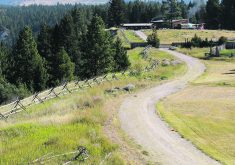Growing carrots has always been a challenge.
In years gone by, I had to watch my husband like a hawk or he would plant several rows of the things just because they produced so well. No amount of arguing could convince him that, come September, there was always a glut of carrots on the market. To let him tell it, the neighbours would all line up for free carrots.
And if they’re not? I would ask cynically.
They should be, he’d reply.
Read Also

Sustainable food has ‘lost all meaning’: prof
That marketing strategy is deader than a doornail, says a University of Guelph professor who specializes in consumer preferences and perceptions of agriculture and food.
His enthusiasm was not contagious. Two of our four children despised the things. Personally, I could take them or leave them.
I took them.
I took them to the house by pailfuls every fall, and then I faced the dilemma of how to use them all. I cooked them. I curled them. I diced them. I sliced them.
The carrot crop never seemed to diminish. I mashed them. I hashed them. I grated them. I rated them: big ones here, little ones there, medium-sized for this, oddballs for that.
Scrubbing all those carrots by hand became a thing of the past the day I read about one smart lady who cleaned her carrots in her front-loading wash machine. I tried it. Wiped off most of the dirt and tossed them in. After being agitated in a cold water bath for about 10 minutes, those carrots came out clean as could be.
Storing them was the next problem. I cut off the tops and layered them between paper towels in a tightly covered plastic box in the fridge. They kept for months.
In the meantime, I slipped carrots into every conceivable concoction. I used carrot puree disguised as pumpkin for pies. Carrots thickened the pizza paste, rounded out the vegetable soup and wound up in drop cookies.
In desperation, I tossed carrot puree into a batch of raisin cinnamon bread. The dough came out such a lovely golden yellow a neighbour wondered aloud how I could afford that many eggs for my bread.
I often wondered what benefits we derived from eating all those carrots. It is said they are good for our night vision, but when I couldn’t sleep I still couldn’t read the newspaper by moonlight.
Just when I wondered whether we might be left walking around with a pale orange hue to our complexion, one of our adult sons asked me out for coffee. He had been away from home for years and had probably long forgotten my annual carrot dilemma. In fact, I knew he had forgotten because when the server arrived, our son ordered a huge piece of carrot cake. I gulped in disbelief. Here was my flesh and blood paying good money for stuff he wouldn’t touch in years gone by.
It made me wonder why we never learn to appreciate what’s good until we are so old we have to pay for it. It’s the premise on which restaurants specializing in comfort foods have become prosperous.
People flock to such eating establishments in droves just to sink their teeth into old-fashioned meat loaf, shepherd’s pie and carrot cake — the very items their mothers had trouble getting them to eat when they were young.
I guess, like carrots, memories are planted small. They take root and grow until the time comes when we feel the urge to experience a taste of nostalgia.
That is the main reason I planted carrots again last spring. I was never as successful as my husband in getting them to germinate in previous years.
One here, one there — was there not a better way to get them to grow? And then I stumbled across a homesteader’s solution on the internet. Soak the carrot seeds for a few hours and then cook up a thin paste of one cup of water to two tablespoons of cornstarch. Let it cool, then stir in the carrot seeds. Put in a plastic bag, cut off one tiny corner and spread the mixture along the prepared row. Cover lightly with soil and wait.
They grew. Not too many, and not too few, just enough to enjoy come winter.

















